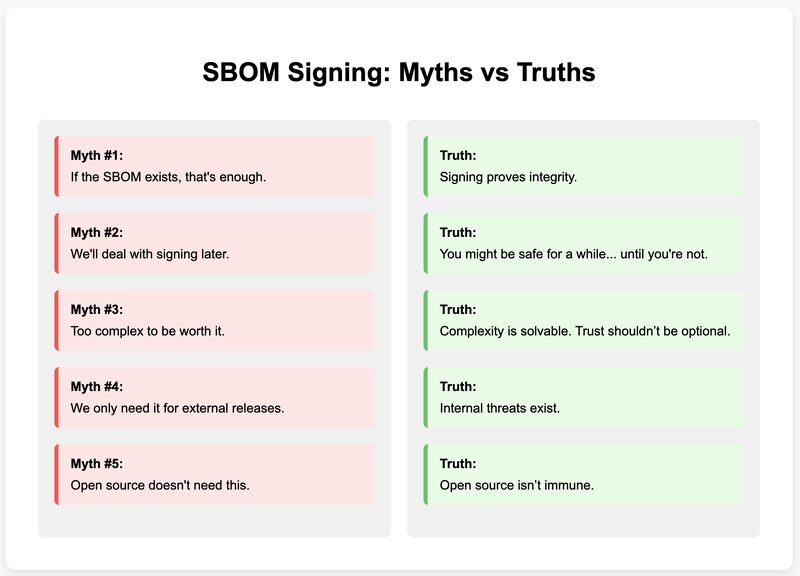🚨 SBOM Signing: The Myths That Are Putting You at Risk 🔥
2025-06-15
Jason Smith

“If the SBOM exists, that’s enough”
“We’ll deal with signing later”
“Too complex to be worth it”
“We only need it for external releases”
“Open source doesn’t need this”
👀 I’ve heard these all before. And they’re not just wrong, but they’re dangerous to believe.
Let’s break them down:
❌ Myth #1: “If the SBOM exists, that’s enough”
Just generating an SBOM isn’t the endgame, it’s the beginning.
An unsigned SBOM is an unauthenticated claim. Without signing, you’re just hoping no one tampers with it.
❌ Myth #2: “We’ll deal with signing later”
Delaying SBOM signing is like building a house and skipping the locks.
You might be safe for a while… until you’re not.
❌ Myth #3: “Too complex to be worth it”
Key management, CI integration, and identity binding can be tricky but these are solvable problems.
If you’re already sharing SBOMs for software transparency without integrity protections, complexity isn’t your problem. You’re prioritizing convenience over trust.
❌ Myth #4: “We only need it for external releases”
Insider threats. Supply chain drift. Misconfigured pipelines.
If you’re not protecting internal artifacts, you’re assuming your own house is clean. The riskiest threats aren’t always outside, sometimes they come from within.
❌ Myth #5: “Open source doesn’t need this”
Open source doesn’t mean risk-free. Unsigned SBOMs leave the door wide open for supply chain attacks.
Signing puts a lock on that door.
💥 The truth?
If you’re not signing your SBOMs, you’re shipping unsigned claims about your software supply chain.
That’s like selling a product with no warranty and claiming it’s guaranteed.
🧠 It’s time to treat SBOMs like first-class security artifacts.
And that means securing them by default.
💬👇 How do you handle SBOM signing today? What friction points have you hit - or solved?
#SBOM #SoftwareSecurity #SupplyChainSecurity #SBOMSigning #DigitalSignatures #PKI #OpenSourceSecurity #DevSecOps #CyberSecurity #SoftwareTransparency